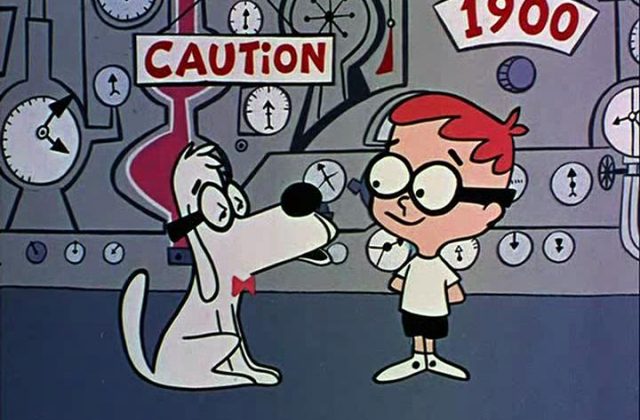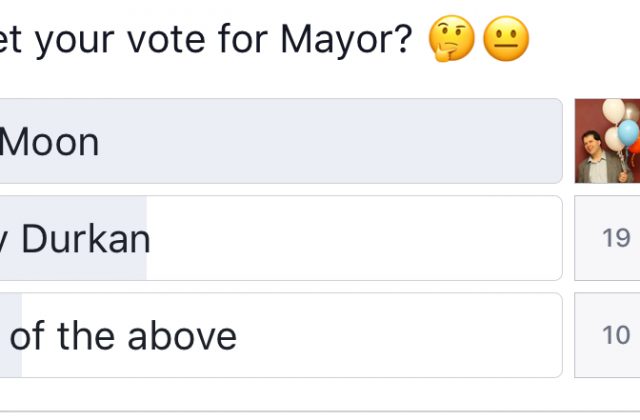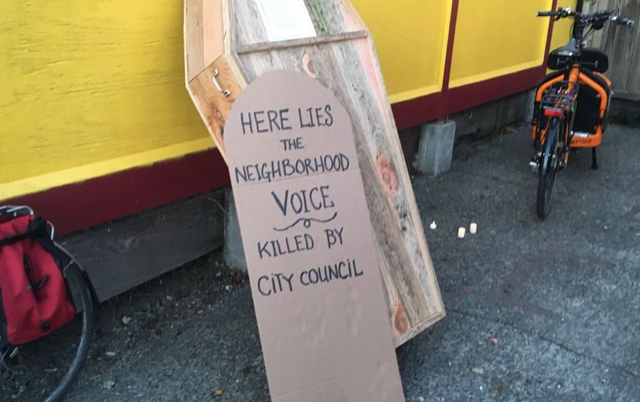The Way Back Machine: Neighborhood Planning and the South Park Bridge
This is part of a series looking back at 20 years of land use, planning, and housing policy history leading up to the state we’re in today. Here’s the story of a neighborhood win that took many years to achieve.
A Big Mess: The South Park Bridge
South Park is largely cut off from the rest of the city by the Duwamish River but connected by a drawbridge. By the 1990s the old drawbridge, built decades earlier, was falling apart and nearing the end of its life, sometimes getting stuck in the up position. It was a problem and getting worse. And everyone in the world was worried about it. Yes. Everyone. See the Duwamish is considered an international water way and the federal government and the Port of Seattle needed that section to be open for ships and freight to pass through; if for some reason it got stuck closed there were far wider marine implications for the Army Corp of Engineers and the Port.
If the bridge got stuck open, the consequences would be equally disastrous for land freight. The South Park Bridge was a choke point for freight originating from the south traveling north and trucks needing to go south from the Duwamish industrial area toward Highway 99 and Interstate 5.
For the neighborhood businesses and residents it would be equally damaging. Bus and emergency services would be impacted. Customers walking or driving over the bridge would be cut off from the restaurants on 14th. And Sea Mar Community Health Center patients would be cut off from the primary care and dental clinics as well as the day care and nursing home.
Not complicated enough? The bridge started, from the north in Seattle but landed in the south, on the other bank of the Duwamish, in unincorporated King County, a small section of the map called “the Sliver by the River.” Each of the governments did not want to pay for the fix for the bridge, whatever it was. The County didn’t have the money and neither did the City. The federal government wasn’t stepping up either. Who would pay for the bridge? Who was responsible for dealing with the fix? Both governments pointed to the other one.
Let’s add another twist. Sometime in the 1990s a neighbor applied, successfully, to get historic landmark status for the bridge, meaning that the structure would be protected from outright demolition.
Then along comes neighborhood planning.
If ever there was a situation that called for a top down solution, this was it. If some power on high showed up with money and a mandate, the problem could just be solved. But the last thing you’d want to do is invite a bunch of lay people with no engineering expertise or legal knowledge into the process. But that’s exactly what neighborhood planning did.
The expert solution was a fixed span bridge that would have landed right in the middle of South Park’s business district, at 14th and Cloverdale. This was the cheapest and most efficient solution the experts argued. The span had to be tall enough for taller ships to pass and that meant the geometry would require wiping our most of the buildings and existing roadways in the neighborhood. Various public outreach meetings were held in the 90s asking for reactions to various proposals. I remember one in which various versions of the fixed spans were marked, “A” and “B” in descending order of the alphabet. Maybe I’m wrong about this but way toward the end of the letters of alphabet was the drawbridge.
Of all the many items in the plan a new library (another thing eye rolled by the experts) and the drawbridge solution were at the top of the neighborhood’s plan. And there it stayed as successive neighbors came and went between the time of the plans start point and the first decade of the 21s century. The plan was the baton, the record, that was handed off year after year, and the demand for it outlived the original groups and individuals – although there was a lot of continuity there too.
After the economic melt down of late 2008, the Congress passed the American Recovery and Reinvestment Act (ARRA) in 2009, a huge spending bill that allocated money for many “shovel ready” projects. I might have the details completely wrong, but funding was finally identified in 2010 and the project for the drawbridge got underway. It took four years, but the new drawbridge opened in 2014.
Next: The Beacon Hill light rail station and neighborhood planning.
The Way Back Machine: It Started With Neighborhood Planning
As I have been working to expand support for our work, I’ve been telling my story and the story of Smart Growth Seattle. I decided it couldn’t hurt to put that story together in one place especially since we’re beginning our fifth year in 2018. I will also try to give a bit of background on why our views about growth and housing are what they are, not in some abstract economic sense but based on the experience.
This whole thing starts out with what I am calling a pre-history, mostly about my own work in this area.
I’m doing this history for three reasons. First, just to get it on record so I can link to it as necessary. Second, I hope that some people will read it and realize that I have a lot of knowledge and history on this subject; I didn’t arrive on the scene in 2014 when Smart Growth Seattle became a full time job for me. And lastly, I hope that people who really care about this city will realize that we’re on a path, a journey.
We got here for a reason. Where do we go next? The answer to that question does depend, significantly, on a deeper understanding of where we have been.
This is a long story, so I am going to post it a little bit at a time. This is the first installment.
For if history relates good things of good people, the attentive hearer is excited to imitate that which is good; or if it recounts evil things of wicked persons, none the less the conscientious and devout hearer or reader, shunning that which is hurtful and wrong, is the more earnestly fired to perform those things which are known to be good.
From the Eccleisatitical History of England
Venerable Bede, 672-735
Pre-History
Neighborhood Planning
I started my work in urban planning and urban issues as a neighborhood participant in the development of three neighborhood plans in Beacon Hill, South Park, and the Greater Duwamish Industrial area. I lived in Beacon Hill and was on a non-profit board for an organization based in South Park, and all three were part of the Greater Duwamish District Council. During that period I was also active in Democratic district politics in the 11th legislative district that also included those areas.
I spent a lot of time in meetings, neighborhood tours, discussions about the Comprehensive Plan, and everything from activating business districts to slowing down traffic, and from renovations of Concord Elementary School in South Park to whether it was feasible to build a station for light rail at Beacon Hill. Throughout those years, there was certainly friction between the City, neighbors, and other players like the school district and developers. Throughout, however, there was a sense that we were processing (in various senses of that word) toward some positive goal with a common purpose.
Why Neighborhood Planning Worked
Neighborhood planning was the result of Seattle’s Comprehensive Plan promulgated in the 1990s after the passage of the Growth Management Act (GMA) in the late 1980s and was, essentially, a bargain between single-family neighbors and City planners. The bargain was that the City would push and incentivize growth into areas already zoned for more density and mixed-use development. These areas, called Urban Villages, would aim to accommodate population expected and quantified by growth targets, in exchange neighbors would get resources for planning, a big say in how the growth was welcomed, and more City investment in the villages. The GMA mandated growth in the cities, Seattle was incentivizing its growth into the villages.
Each neighborhood, there were 37 of them, would get issued a City staff planner who functioned as a guide, guru, advocate, expert, and hand-holder for the neighborhood planning group. The planning groups were composed of anyone who showed up. Often the room would be filled with the harshest critics of the Comp Plan process, bitter about its successful passage, and in the room mainly to “keep an eye on things.” I’ve described these people as the ones tightly wound, at the back of the room, with their arms crossed and face set in grimace.
The neighborhood planning groups were also given a budget and the ability to hire a professional planner or architect to help with the planning process both technically but also to visualize the plan. While the City hired this consultant, they really worked for the neighborhood, and over time the City staff from the Neighborhood Planning Office (NPO) became a force to contend with politically.
I need to stop here for a moment to emphasize something.
I cannot think of a more hazardous thing to do than to convene a group of neighbors with an open mandate to plan for their own neighborhood and allocating them City staff and a budget for a consultant that would actually give a visual life to their idea. Imagine the expectations that would be aroused, and foment, and controversy. This was a recipe for stoking neighbor on neighbor conflict, coalescing opposition to the City itself, and even possibly creating a movement for fundamental and profound changes to City government from Charter amendments to neighborhood candidates overthrowing incumbents on the City Council.
None of those things happened. Instead, new people who had never been involved stepped into the process. These new arrivals took responsibility for refreshments at meetings, organizing venues, setting up sub-committees, attended Council meetings, attended conferences and trainings, and generally became experts on their own neighborhoods and City process. From the back of the room, the bitterest and most skeptical critics (“We’ve seen this before. What happened to that plan from 1983? Nothing!”), unfurled themselves, and started sharing their own ideas.
Everyone in those rooms and meetings could push forward an idea, build support in the group for it, advocate for it with City officials and department heads, and generally rally their neighbors around the concept. Instead of an angry stew of bitterness against the Comp Plan and City process, what emerged was a group of newly empowered people who invested their free time with the hope of making their neighborhood a better place. Through neighborhood planning people were forced to argue, discuss, agree, and prioritize. Not everyone was happy, but everyone understood the framework and the goal: produce a neighborhood plan the could be presented to the City, a plan that the City had promised as part of the bargain to implement.
I think all the wonky kids in town would be stunned at these “plans.” They were mostly Word documents of various formats broken into different areas (i.e. housing, parks etc.) and ordered and prioritized based on neighborhood preference. They were many pages long and each one was different and unique. There was no electronic database at first, no website or online presence (it was the 90s!), just stacks of planning documents and rolls of drawing and schematics.
Let me cite two examples of planning items before I generalize why this effort was successful, the South Park Bridge and the Beacon Hill light rail station.
Next: South Park case study
Almost Persuaded: Moon is the “Urbanist” Choice, Durkan Works for Big Developers
Last week I posted at Forbes that neither candidate for Mayor, Jenny Durkan and Cary Moon, are voteworthy when it comes to their views about housing and the language they use about their views. I said the same thing on this blog too. In the Forbes post I said,
So Seattle is faced with a choice between a Mayor who sees her own departments in charge of land use and housing policy in City government as the “zoning and housing people,” and a Mayor who will waste lots of time and resources of those same staff trying to chase some invisible cabal of foreign investors. Maybe, as people often suggest, what candidates say is often very different from what elected officials actually do. That’s about the only hope Seattle as at this point when it comes to the next four years.
Well, I shared the post to the Market Urbanism Facebook page. Like the City Builders page, where Moon is leading in a poll I posted (Moon 62%, Durkan 26%, None of the Above 9%), the response was very pro-moon.
Christopher Young I think you’re being unduly harsh. They have to say SOMETHING to get elected, and sometimes they have to throw a bone to the NIMBYs, who vote. I haven’t heard either candidate say anything crazypants, like we need to put a moratorium on all new construction to protect this mythical affordable housing that the “greedy developers” are destroying. Moon is criticizing real estate speculation in general, not just by foreigners, but she has never articulated a plan to do anything about it. Probably because they only thing we could do is dramatically increase building to keep up with supply, which the NIMBYs don’t want to hear.
And then someone else chimed in.
Evan Derickson Moon voices support for Missing Middle housing just about every chance she gets. She said the right amount of single-family zoning for Seattle is “somewhere between zero and less than we have now.” That’s about as strong in support for increasing the housing supply as a candidate can be in Seattle without throwing their campaign in the trash.
Loosening zoning restrictions in dense areas like Capitol Hill or the CBD is low-hanging fruit, politically-speaking. Moon is in the unenviable position of convincing SFH property owners that a little more density does not mean their house will be bulldozed tomorrow. Economic arguments in Seattle will turn off more voters than they bring in.
It’s not really a candidate’s job to be at the ideological vanguard. It’s the job of advocacy organizations to set up a political landscape where these sorts of candidates can get elected.
And I said this:
Well you . . . are persuasive.
I cannot and will not vote for Durkan. She ran a really horrible add that was paid for by the Chamber and NAIOP saying she’d hold developers accountable for building 20,000 units of affordable housing.
This shows that she’s in the thrall of big time high rise developers who know they won’t be doing any inclusion or paying very many fees (the so called Grand Bargain is great for their portfolios — like a rounding error — where our folks get huge fees that make projects infeasible).
Durkan doesn’t get it.
My concern is that Moon sees Builders and developers as “bad” and she’s obsessed with the Bigfoot of “speculation.”
Remember, missing middle housing isn’t built by the Keebler Elves — banks have to finance it and Builders have to build it.
Take a look at this despicable ad put together by the Greater Seattle Chamber of Commerce and paid for by NAIOP among others.
Who pays for the 20,000 units of housing? In the end consumers of housing will pay, but not before the costs are absorbed by small and medium sized builders in the city. This the so called “Grand Bargain,” really a bribe paid by big time developers like Vulcan, laundered through the Office of Housing, and paid to giant non-profit developers who build housing at as much as $500,000 per unit. How much will it cost the non-profits to build 20,000 units at that cost?
That’s $10,000,000,000 or 10 billion with a “B” dollars. Let that sink in for a minute: ten billion dollars. That’s not just absurd, it’s completely unacceptable. Imagine the housing economy trying to absorb even a fraction of that cost which will ultimately be passed on in higher prices. And in Seattle what happens when prices go up? So do fees, fines, regulations, and costly permitting delays. So for builders and developers who haven’t already cashed out with the non-profits there is no way to cast a self-interested vote in Jenny Durkan. I also think the Chamber has permanently alienated a big part of the business community because of a complete lack of leadership and principles. It’s going to take a long time to put that back together after this campaign.
City Builders: No, Angry Neighborhood Voices are Alive, but What’s Next?
Sometimes I think if you saw my forehead it would be bright red from slapping it and hitting it against a brick wall. As I pointed out yesterday, there are some stubborn myths out there about Mandatory Inclusionary Zoning (MIZ) and who it helps, hurts, and who was behind it in the first place. What’s ironic, is that angry neighbors are now raising their voices again against MIZ. I think that’s great even though they mostly don’t know what they’re talking about. Weirdly, neither do so called “urbanists,” a designation I still have yet to understand. The urbanists are mad at the neighbors in Wallingford because the neighbors say nobody is listening to them. I agree. But it’s a tangled mess. Here’s what they think in Wallingford, from a story on KOMO news:
“I believe they are not listening to us, they don’t want our input,” said Miranda Berner, President of the Wallingford Community Council. “This is a top down plan that’s being pushed on everybody and its being pushed on every neighborhood without talking to the neighborhoods individually.”
Wrong on the first part. But right on the second. The whole MIZ thing is a top down process. But neighborhoods wield a lot of power, just not as much as non-profit housing developers and big downtown developers like Vulcan. Confused? It would be a surprise if you weren’t; that’s the way supporters and pushers of the Grand Bargain want it. So I posted to Facebook’s City Builders page the following brief history.
————————
What’s remarkable about this sign [see above] anyway (“neighborhood voice killed”) is that it is entirely false.
Let’s look back.
1. In 2011 angry neighbors killed first floor retail in low-rise zones. Thanks Mike O’Brien!
https://www.seattletimes.com/seattle-news/council-rejects-mayors-plan-for-more-stores-in-neighborhoods/
2. Battle for more density at Roosevelt ended with a paltry 65’ for TOD thanks to angry neighbors.
Rough ride: Roosevelt rezone creates TOD opportunity
3. In 2012 Tom Rasmussen started a sustained campaign against microhousing at the behest of angry neighbors.
https://www.seattlemet.com/articles/2013/4/18/the-pitchforks-come-out-at-apodment-hearing-april-2013
4. In 2012 angry neighbors successfully got a moratorium on small-lot development in single-family zones.
https://www.seattlemet.com/articles/2012/9/5/city-could-prohibit-some-small-lot-development
5. In 2013 angry neighbors got Sally Clark to begin a war on low rise zones.
http://www.seattle.gov/dpd/cs/groups/pan/@pan/documents/web_informational/s047759.pdf
6. In 2014 small-lot Development was killed.
http://www.seattletimes.com/seattle-news/seattle-agrees-to-lower-height-limits-of-new-houses-on-small-lots/
7. In 2014 congregate microhousing was killed.
Microhousing: The City Council Eliminates Another Housing Option
8. In 2014 low rise zones were effectively downzoned (we appealed; where were you?)
Pro-growth group tries to halt height rollback in Seattle’s lowrise neighborhoods
9. Angry neighbors and non-profits collude on boosting incentive zoning fees and blocking development in SLU; Peter Steinbuck is hired by the Mirabella’s angry seniors to protect their view of the space needle (2011-2013)
https://seattle.curbed.com/2013/3/13/10264468/how-important-is-your-view-of-the-space-needle
9. When it’s demonstrated IZ doesn’t work, Seattle City Councilmember Mike O’Brien proposes a freewheeling tax on every square foot of development to fund non-profits; this is cheered by angry neighbors.
http://www.nwrealtor.com/2015/06/29/seattle-proposes-new-tax-linkage-fee-on-housing/
10. Angry neighbors screw up frequent transit service exemptions with an appeal. (2014)
City’s ‘no parking necessary if built near frequent transit’ rule proposed for a rewrite
11. Angry neighbors screw up DADU legislation with an appeal.
12. Angry neighbors screw up FTS more with another appeal (2017).
13. Angry neighbors collude with communists, socialists et al on “Tenants Rights” AKA rent control and get bad legislation passed (first in time, deposit caps etc; bad because it doesn’t work to achieve stated outcomes desired).
14. Design review remains an expensive and pointless muddle of process and waste
15. A myriad of code interpretations are being bent to goof up housing (trash rooms getting bigger, pointless water main extensions.
Mayor and Council: It’s Time to Assess How Much You’ve Pushed Up Housing Costs
16. Oh I forgot, over $75,000 had to be spent to over turn illegal abutting lot legislation (did you contribute?![]() 😉) pushed by and supported by Councilmember Mike O’Brien.
😉) pushed by and supported by Councilmember Mike O’Brien.
https://www.seattlemet.com/articles/2016/4/11/lawsuit-against-city-raises-issue-of-density-and-affordable-housing
17. Somewhere in 2015 Danny Westneat wrote an op ed and some people got mad about single family people screwing up the city.
https://www.seattletimes.com/seattle-news/get-rid-of-single-family-zoning-in-seattle-housing-task-force-says-in-draft-report/
18. The Council is poised on passing the single most devastating legislation citywide, Mandatory Inclusionary Zoning, a scheme that will make many projects infeasible, will restrict supply and raise prices, prices will go up to absorb fees, and the Council will raise them to “create affordable housing”
19. Many people support MIZ because neighbors oppose it.
Did I miss anything? ![]()
Now. If you’re still awake, here’s part two.
Clearly the “neighborhood voice” is alive and well.
But why, then, would the Council grind ahead with MIZ?
Follow the money.
The non-profits will wring millions in cash ![]() 💰 from the imposition of MIZ. Why do they need the money? Because they suffer under the same limits imposed by Council I’ve described (ie design review, water main stuff etc). They also buy land at market prices and pay more for labor.
💰 from the imposition of MIZ. Why do they need the money? Because they suffer under the same limits imposed by Council I’ve described (ie design review, water main stuff etc). They also buy land at market prices and pay more for labor.
Non-profits 1 angry neighbors 0
Why would big shot developers support this? Well, there are only a few “big shots;” their clients got to pay a fee that was essentially the same as they’d pay anyway and they mostly build downtown and SLU. They all claim credit for the Grand Bargain. “We gave at the office!”
The “social justice” crowd wants and is getting more fees and will push for more inclusion. That’s already starting (see Lisa Herbold’s low opportunity fine).
Rob Johnson is an increasingly untenable spot. Alex Pederson, a more charismatic version of your favorite NIMBY, is in waiting. Johnson has two choices — stop the madness and end his pursuit of MIZ beyond where’s it’s been imposed.
Second, he can start dialing up Inclusionary fees and requirements. That would appease angry neighbors and the social justice crowd.
What do you think he should do?
What will he do?
What will the new mayor do?
And will anyone listen to people who actually build and develop housing?
Note to Connelly: Republicans Bash Seattle Because it Has Lost Touch With Reality
Joel Connelly, Seattle’s answer to Mr. Wilson in the Dennis the Menace cartoons, has taken issue with Republican efforts to tie left leaning Mankha Dhingra to the frantic and feverish lefty politics of Seattle. He’s telling supporters of Jinyoung Englund to get off his lawn because he thinks it’s not relevant to point out the connections Dhingra has to the Seattle’s swiftly tilting to the left politics. First, you don’t need to run a Public Disclosure Commission query to know that lots of money and support is flowing from Seattle lefties to Dhingra. Remember, lots of socialists in Seattle think Sammamish is something you put on pita bread; but they do know that the 45th district will tilt the legislature to the Democrats. And for the rump of people left in Seattle who understand economics, they also know that a Mankha win means the possibility that the equally left leaning Seattle caucus in the legislature might be able to get its way on things like rent control. Connelly and others in Seattle get their party affiliation confused with principles.
Oddly, its the curmudgeonly old Connelly who gets his plaid pants in a twist all the time about Seattle’s goofy politics, especially those of its bullhorn wielding proponent Kshama Sawant. When she called critics of protesters who routinely shut down Christmas celebrations in Seattle’s downtown fascists he wrote,
Bluntly put, the city’s confrontational far left should bear that label . . . for drowning out dialogue and trying to shout down democracy. They are enabled and justified by such apologists as Sawant and The Stranger, champions of the new uncouth, intolerant tone of Seattle politics.
Yep.
Like someone who is criticizing his own family, Connelly doesn’t hold back. But when someone outside the family, like a Republican does the same thing, well, then that’s fighting words. It is plain as day that Dhingra is getting support from Seattle liberals who claim a homeless “crisis” but think nothing of spending $300,000 to defend Councilmember Sawant’s tirades against landlords and police from legal challenge. Connelly asks,
What does this have to do with representing Kirkland, Sammamish and part of Redmond in the Senate, and does it have any bearing on Dhingra, who has lived in Redmond for 21 years? Englund tries to draw a tortured distinction:
“Seattle wants to charge city businesses a $100 per head tax but okay to charge taxpayers for these legal fees? This might work in Seattle but it certainly doesn’t live up with Eastside values.”
Well, Mr. Wilson, er, Connelly, this is true. It is a fact. At least the part about the proposed tax on jobs. I admit, I don’t know what “Eastside values” are, and I suppose that’s for the voters over there to decide. But the truth is that a voter in Redmond, Seattle, Renton, or Spokane should be wondering why it matters so much to lefties in Seattle and Connelly to defend a Democrat running in a Senate race in an off year.
Sawant wants rent control. The only way she can get that is through Olympia. Sawant, the City Council, and both candidates for Mayor want an income tax and a tax on capital gains. Again, there’s no way to do that but through Olympia. Voters on the Eastside and everywhere else in the world, should know that putting Dhingra in the State Senate makes all those things more of a reality for them — whether they live in Kelso or Kettle Falls, and whether they run a business in Tacoma or Tallahassee that is thinking of expanding in Washington state.
Sadly, when people have no principles party becomes the guide. I’ve seen many people in Seattle cheerleading Dhingra and bashing Englund with glee; people who are against rent control and support more housing supply. Why? Because Dhingra is Democrat and Englund is a Republican. If Connelly is truly worried about the out of control left in Seattle, then he’d hope for a win by Englund. That would at least keep the socialists and lefties who’d like exactions on housing and income on a shorter chain. And people who claim to be “urbanists” might do well to “like” that post trashing Englund but sit on their hands and stay out of it.







